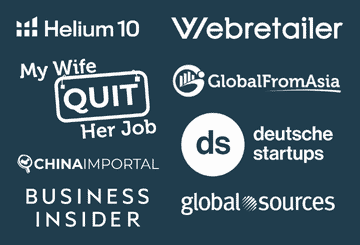Welcome back to the second part of this series on how to build an ecommerce business and brand! If you’ve missed the first part you can check it out here.
As in the first post, this is a rather long post (10,500+ words) but brand building is so essential that I wanted to bring the most to you. Sorry if it got a little bit longer.
In this blog post I will be focusing on Product Innovation, Manufacturing, eCommerce, Social Media, Retail and much much more.
BRAND BUILDING – PRODUCT INNOVATION
The ultimate goal for any business is to be sustainable in the long term. To achieve this, you need to have a Unique Selling Point(USP) that differentiates your business from the competition. This mini guide and case study is meant to get you to think outside the box in terms of product selection and launch cool & innovative products.
In terms of Private Label products, sellers normally follow one of these options:
- General items with unique logo and packaging.
- Completely unique product.
- Improvement over existing products.
Importing general items used to be profitable, but it’s not sustainable in the long term! When choosing products, you need to think from the Amazon customers’ point of view. How would you feel(as a customer), if you’re searching for a particular product, and find something like this:
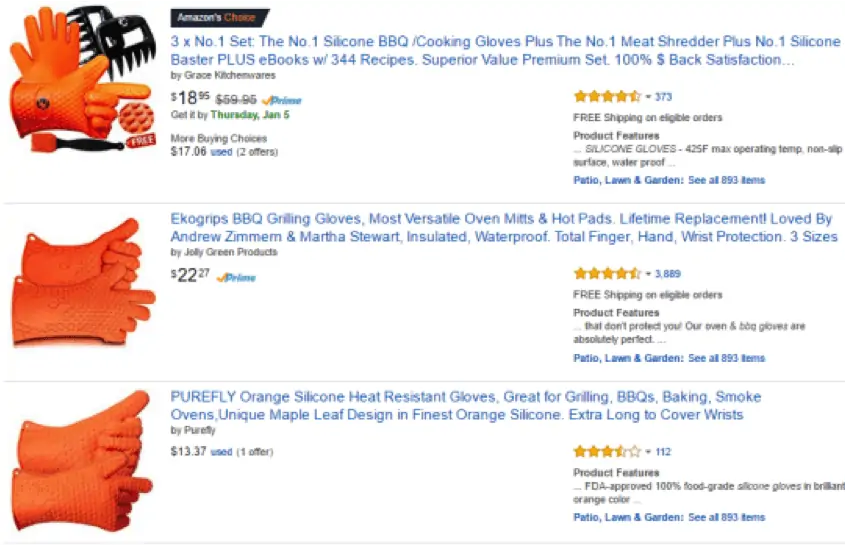
Disclaimer: Some of the products may contain an affiliate link and we may make a commission if you click on it at no additional costs to you.
This is a very bad approach as the only way to differentiate between each product is:
- Listing
- Photos
- Price
Price is the most obvious one, so more often than not, it becomes a race to the bottom. This is not what we want as a brand. By creating something that the market wants & improving upon it, you will have control over your brand. This is also an asset if you plan on selling to retailers in the future – Retailers love unique, branded and in demand products!
Today’s case study involves picking an existing product and completely breaking down each aspect of it and try to improve it.
Note: This is only an example and the strategy should be applied for your product of choice.
THE PRODUCT
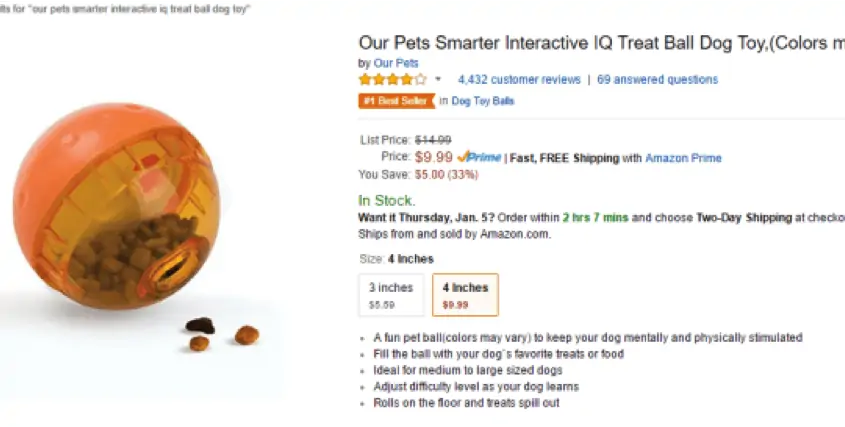
For this case study I picked an Interactive Dog Toy Ball. Let’s have a quick overview of the product.
- Number 1 Best Seller in Dog Toy Balls
- 4,432 reviews
- 2 Variations
- Multiple Colors
Based on the initial data, these numbers may seem prohibitive, however:
- Multiple reviews indicate the product is popular
- Variations show demand for different sizes and colours
All that needs to be done is analysing the product carefully and see if we can improve it. So let’s go ahead with our product analysis.
PRODUCT LISTING
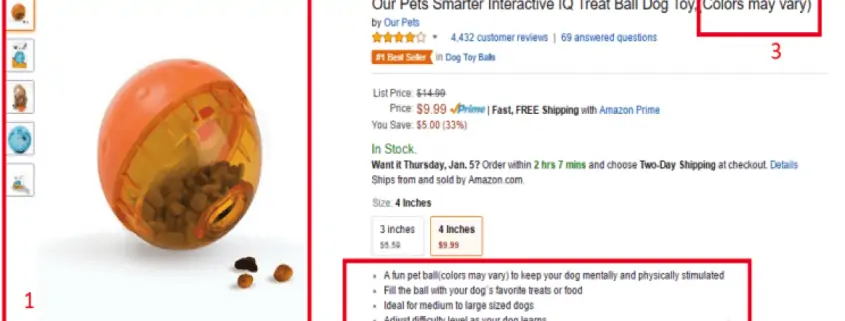
Surprisingly, the listing for this product is very lacking. As seen in the above image I have pointed out the 3 main features I find lacking:
- Poor Images & Very Bland – A product with this popularity/demand should have higher quality pictures.
- Bullet Points – The bullet points are too short and don’t describe the product features in detail.
- Listing Title – This, in my opinion, is the most lacking part. The title is not Keyword Optimized and they have the words “Colors May Vary”. As a customer viewing the listing, the question I ask is: What colors are available for this product? Which color will I receive?
PRODUCT DESCRIPTION
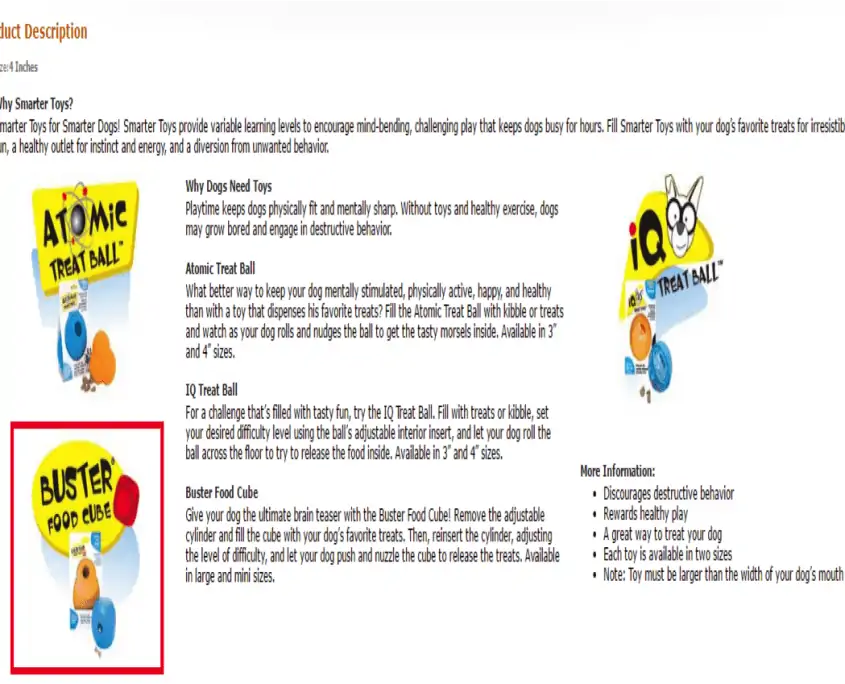
The seller has Enhanced Brand Content/A+ Content, however, they are not taking full advantage of it. The description is short and the pictures show only the packaging instead of highlighting the product’s features. Furthermore, they included a picture of another of their products!
The description should be a keyword rich, informative section where you provide features and details to the customer.
REVIEWS
Moving on with the product analysis, it’s time to check the reviews – The item is a best seller after all! Reviews of customers are extremely important, more so after the Amazon Review change where all the giveaway reviews have been removed. Let’s see what the reviews tell us about the product:

The most notable aspect is that 24% of 4,430 reviews(1063 reviews) are 3 stars or lower. This already shows me that the product can be improved upon, but let’s look at the positive reviews first.
POSITIVE REVIEWS
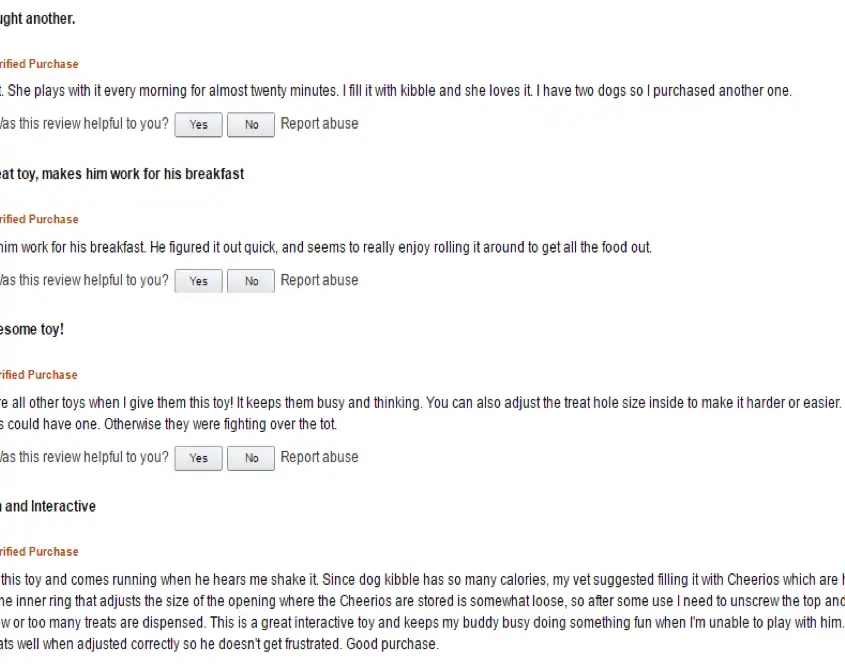
Looking at some of the positive reviews, I picked up these features customer like:
- Fun Toy and most dogs love it.
- Adjustable difficulty of the item makes it accessible to any dog.
- A lot of the reviews suggest customers bought 1 or more. This is a very good sign.
- The product makes their dog exercise more.
- Positive reviews are an important aspect, as they tell you what customers LOVE about the product. If you are innovating or improving an existing product, you have to know what customers like about your competitors.
NEGATIVE REVIEWS
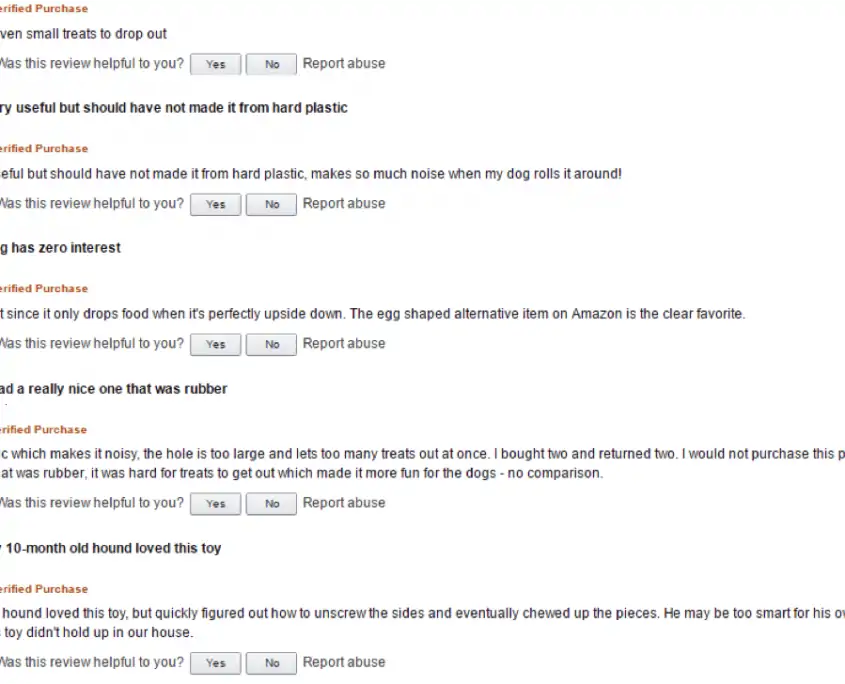
Looking at the negative reviews throughout the listing, I have noticed a common theme:
- Cheap material – most dogs break it easily.
- Dangerous – Some dogs have risked choking because it comes apart easily.
- Boring – some dogs found the toy to be boring, this suggests that the toy is only ideal for particular breeds.
- Functionality – Some customers found that the treats don’t come out properly.
When looking at negative reviews, focus on a common theme – if many customers complain about a particular feature, this can be improved!
EXTERNAL RESEARCH
After focusing on the listing, it’s time to search if there’s demand outside of Amazon USA. Remember, the goal is to build a lasting and global brand, so you need to expand your research further. I will look at this particular product and see how it performs:
GOOGLE TRENDS
When launching a product, it’s easy to only focus on that particular product. However, the goal is to see if there’s demand in the category. I made a Google Trends search for the keywords “Dog Treat Toys” and “Dog Toy Balls” to see if there’s any demand throughout the year for this product.
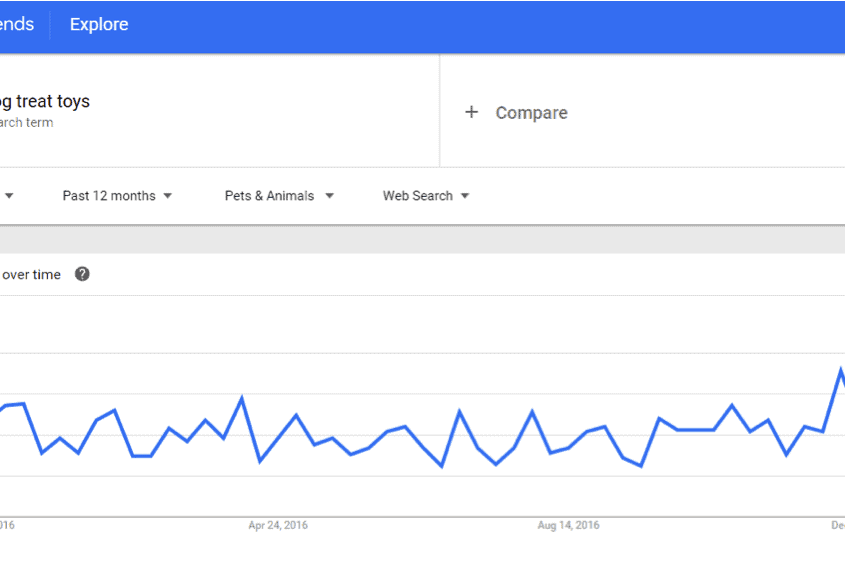
As seen above, the demand for the product is fairly steady all year round with some months experiencing high demand. This is good news as it shows that this product is not seasonal and their is interest in this niche.
NON-US AMAZON
The idea is always to first launch a new product in the US market(higher demand) and expand into other countries. As you can see below, I have made a search for this product in the Spanish, UK, France, Germany, Italian & Japanese Amazon marketplaces. Although this product is listed in all marketplaces – not a single review can be found. This can mean:
- No demand for the product outside the US – Highly unlikely considering the category(Pet Supplies).
- The seller main focus is only the US, so releasing a better product in the other marketplaces would give you an advantage.
AMAZON DE
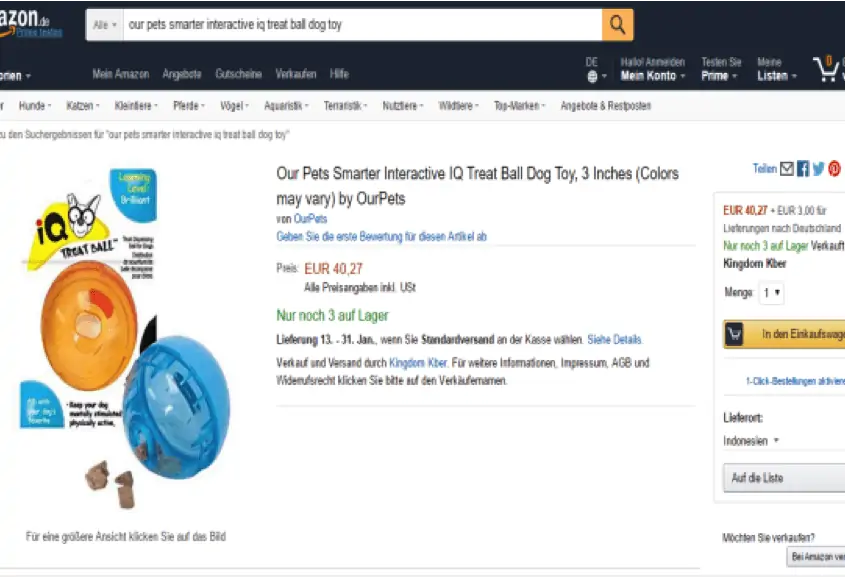
AMAZON JAPAN
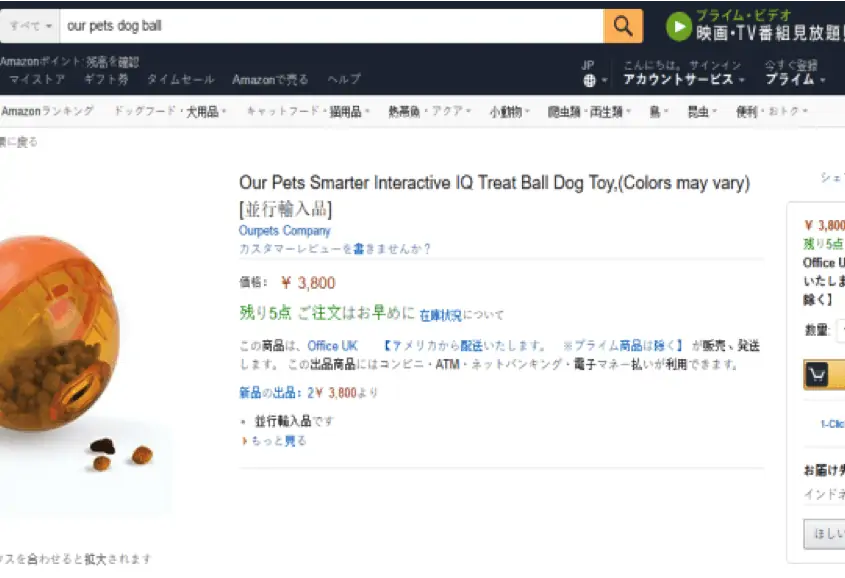
Re-Cap
Based on the initial analysis, my conclusions are:
Positive
- Quality is an issue – We can make a better product.
- Material is low-quality hard plastic and therefore we can improve the material quality or use a different material.
- Certifications – No certifications are mentioned in the listing, by obtaining certifications we can make the product better.
- Photos – Higher quality photos.
- Listing – Better product descriptions & bullet points.
- Variations – Include colors in the listing & offer 2-3 colors.
- Packaging – With some effort we can make a better packaging.
Negatives
- The product is extremely popular and therefore hard to get the #1 spot.
- Large amount of reviews – However, 24% are 3 star or lower, so a better product can outperform it.
Warning: If going this route, it is extremely important to check if any products you take inspiration from don’t have a patent associated with them. The idea is to have a brand with unique products – So be unique!
What’s Next?
Once you have made significant research about a particular product. You need to make any improvements come to life. The way to do this is by either:
- Hiring a product designer to design a completely new product based on the feedback you give them.
- Sourcing a factory that produces similar products and see if they can make the requested changes.
I recommend hiring a product designer as they can completely experiment with different designs and you would get a unique product for your brand. When you’re happy with the result, you pass on the design to the chosen factory and a mold + sample is made.
A Note About Product Research
We are all familiar with product research tools such as Jungle Scout or Unicorn Smasher. While these tools are great, they shouldn’t be used to exactly tell you which products you pick, BUT to discover hidden gems within the marketplace & monitor sales volume. The best way to truly build a lasting brand is to:
- Build a brand around a category/niche you’re passionate about. If you have a strong passion/interest towards a particular niche, you know what the market wants.
- If you already have a product in a category, focus on building a list & interact with potential customers via social media. Once you build trust with your customer base, they will often tell you what products they love/want.
- Release products which are both unique and better than the competition.
Moving Forward
Once you release a new product on the market it’s best to release other products related to the brand. This is done to:
- Cover many sub-niches in one category.
- Show expertise in your niche
- Build trust with your target market(if you consistently release great and innovative products)
Good places to look for new products related to your item are:
“Frequently Bought Together” section

As you can see with our product from the case study, Amazon is already showing you an item that is frequently bought by customers.
“Customers Who Bought This Item Also Bought” section
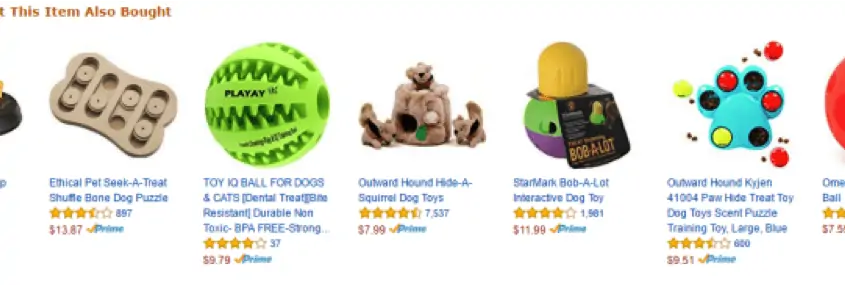
Same as above, Amazon gives you all the data you need to make your research easier for your next products.
“Sponsored Products Related To This Item” section
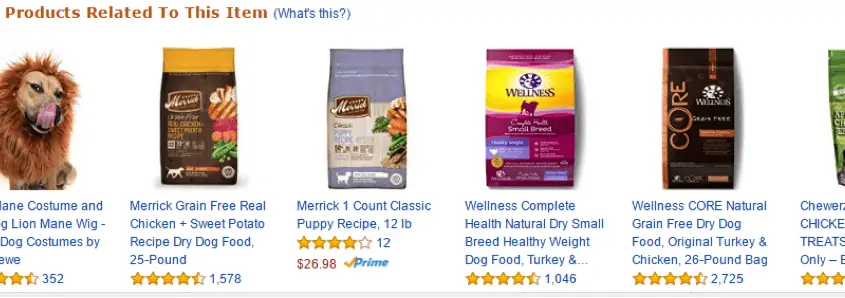
This is very important as it shows PPC activity surrounding a category. If other sellers are spending money promoting their products, then, there is interest in the market. As you can see below, Amazon is showing a lot of products.
CATEGORY MAGAZINES
Magazines (both online and offline) are a good source of inspiration. These publications only cater to an audience actively interested in the category so they can greatly help you. Understanding the market and your potential customers will help you gain authority within your niche.
FORUMS
Forums are a great source because audiences discuss topics related to a particular niche. Which is very helpful because:
- You can get inspiration for blog posts
- You can segment your audience( Gender – Age – Household Income etc)
- Advertising – Forums have advertising sections, see what type of brands and products are advertised and do your research on that.
TRADESHOWS & EXHIBITIONS
This is by far the best way to source new products. Trade shows are a great way to see trending & upcoming products and find potential suppliers. Manuel will talk about this in more detail as he has a lot of experience in this field.
Reminder: Always do your research before investing time and money into a product – Your customers and business will thank you later!
In this next part of the post I’ll talk about private label versus your own design and why being unique (in the long run) is better.
I will also talk about Industry Research & Demographics (Who will be your customer?) because I feel this goes hand in hand with the decision on choosing a product.
Before we discuss private label versus your own design I will dig into Research & Demographics first – who will be your customer? Is there enough demand? Your customers or target market can also determine whether you go for private label or your own design.
BRAND BUILDING – INDUSTRY RESEARCH & DEMOGRAPHICS
I’ve talked in previous blog posts on how to choose a product and do your industry research. So I won’t go too much into detail in this post, check out the post I did on this a while ago here.
Let’s imagine that you aren’t sure yet which product you want to sell in but you have a certain industry in mind. I always say follow your passion or something that you can relate to.
After all it doesn’t make sense to start selling Bluetooth speakers when you know nothing about them let alone explain features or answer technical questions of your customers.
So ideally you start with something that you can at least relate to or feel that you can improve on.
Let’s pick an industry. As some of you know this from me already – I love hiking and trail running here in Hong Kong, so lets look at that niche. Me hiking/trail running in HK’s mountains.
1) I go onto Google and start my search.
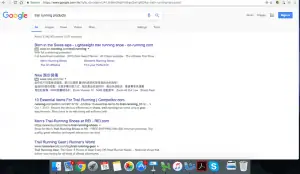
2) I check the first few links and I find a site that has a compilation of the top 10 products – makes it very easy for me.

Here’s the Top 10:
- Jacket
- Shirt
- Pack
- Handheld bottle
- Shoes
- Socks
- Poles
- Neck Gaiter
- Medical Kit
- Food
3) Next thing I do is go onto Google.trends.com and enter “trail running”.

It is a very trendy topic as you can see
4) Now lets look at particular states in the US:
Colorado, Utah, Washington, Arizona, North Carolina are the top 5.
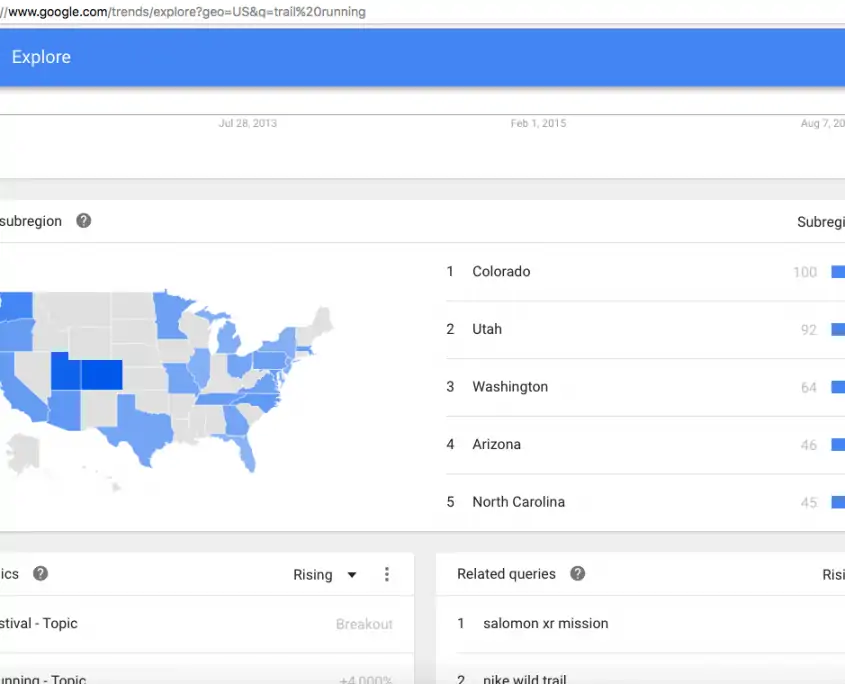
5) If I look into cities as you can see there is a very high demand in Denver, Portland, Seattle, Austin & San Francisco (& a few more)
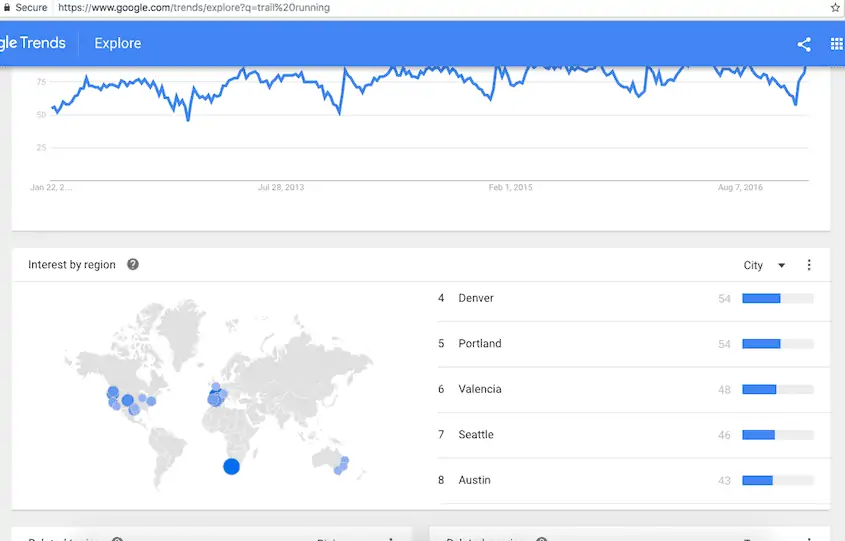
I know from living here in HK there is very high demand as well. Now if Amazon would have a store here that would be probably my first item to put up on as a listing.
As an alternative I could also set up an eCommerce shop here in Hong Kong (there’s my next business idea).
However I am going to focus on selling a product in the US now either on Amazon or my own eCommerce shop.
Next thing to do would be to research the particular top 10 products and then focus on either the highest demand or the product I can affiliate myself with the most.
After I pick a product I go onto Google keywords planner. I pick “trail running jacket” and as you can see there’s a very high demand (100,000 – 1Million monthly searches on Google).
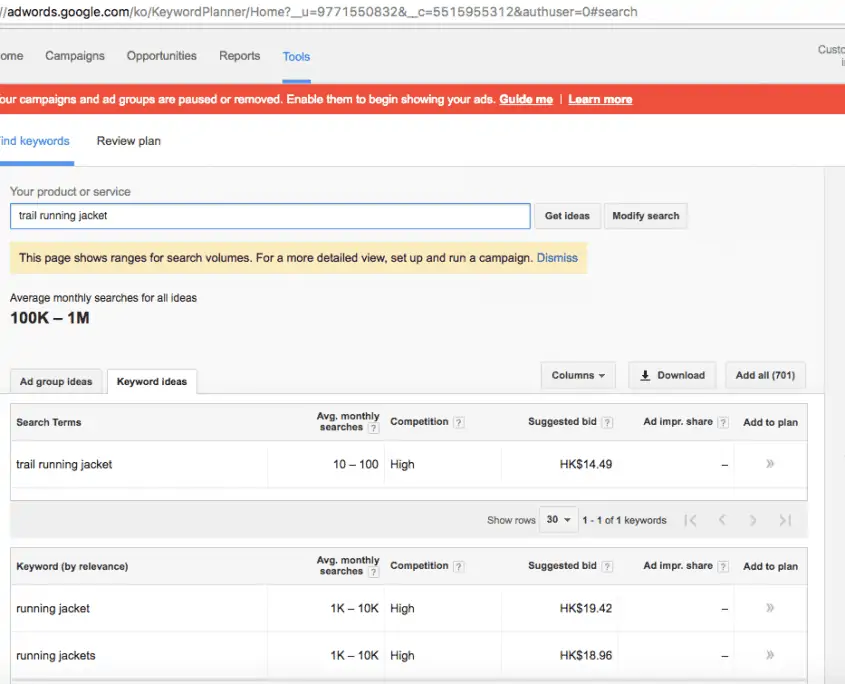
If I were to go after shoes it would even be 1M-10M per month. Thats a lot of potential customers.

What do I do now with all those numbers? Nothing for now since I still am far away from launching a product, but the point of this exercise is that I become aware of the trends, the search and interest volume of my potential clients and how I can take that to my advantage.
E.g. I can set up my own shop or sell on Amazon and drive traffic via targeted Facebook ads (or Google) to my listing. And I can specify that by country, state, city and interest. I am not going into detail now (thats for later) but just a quick look at a Facebook campaign with these keywords and targets generates a audience of 790,000 people. Something for later when my product is live (or during the launch).
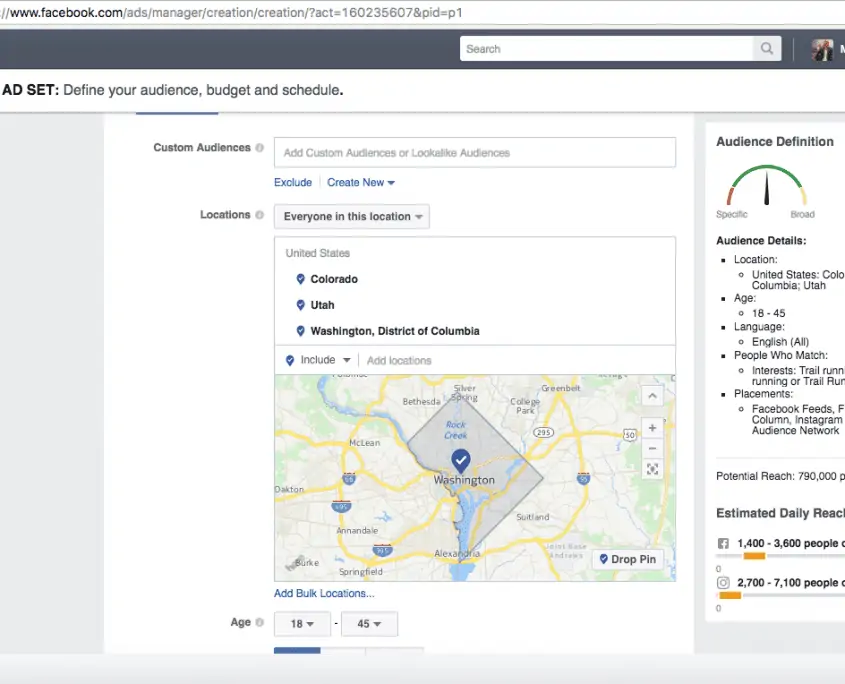
Now obviously this is just a brief and short trip into researching demographics and interests. But as you can see from above, there’s literally a million potential clients for me.
Obviously I would now have to do my product research, find suppliers etc but this will be a post for next week.
What you can do from here on is to look up the competition on Amazon and how you can improve a product or even get unique ideas.
Let’s assume that you have your product and industry well researched. What do you pick now? Private Label or having your own design?
Lets look at the options:
PRIVATE LABEL
4-5 years ago Amazon FBA private labelling became the No.1 way to start your new business with a small capital. Simple – find a lightweight product, fits in a shoe box and costs less than 2$.
So many people jumped onto that train that today we have immense competition on Amazon. While there are still categories and products out there that have small competition, its getting more and more difficult for everyone.
I am sorry to tell you but those days where you start off with 1000$ or less are over. I still see success stories with private labelling however starting capital should be at least 3-5,000USD. You are going to want to order a quantity (say 500-1000 pieces) that last you 1-3 months when you launch, especially if your product goes well. You will need capital for marketing (PPC, Facebook ads etc., influencer campaigns), logistic costs from China, inspection costs, photography and business set up costs. If you are looking at higher priced items from China – because they have less competition, 5000US$ are easily spent on product costs only.
How does private label work? By now I think most of you how it works but basically you are buying a product off the shelve from a manufacturer, maybe improve it, put your own logo on the product or packaging and send it to Amazon. Obviously there are many steps in between but thats pretty much it in a nutshell.
Does private labelling still work? Yes it does, but the competition is just immense right now that you’ll want to pick your product carefully with extensive research. Perhaps instead of making it difficult for yourself with limited capital you may want to look into other private labelling like wholesale private labelling.
So while private labelling in its different forms is still a viable option and will make you money you will have to have a good product that stands out plus extra capital for marketing and advertising.
The most obvious downside on a private label item is that anyone can come in and hijack or have the same product up after a few weeks. Even if you are brand registered, a competitor can come in and modify the product with his factory, maybe even improve it and sell under his own listing. Within a matter of weeks you can have 4-5 competitors and the price gets driven to the ground. Think of the melon slicer that everyone tried to sell and within 2 months there were 30+ sellers of this product. Imagine you would have been the person designing this item, how long you’d been the only one making huge profits. All the other guys that came in after you had to fight for the price and customers. Basically a race to the bottom.
What are the advantages on private labelling?
- Small investment costs (3-10,000USD+)
- Quick turnaround time from placing orders to selling the product
- Good starting point to make money on the side and learning the process
- Don’t get me wrong, to start out and if you are concerned about capital and big investments private labelling is a great way to get started. You’ll learn the ropes, get your first experience in China and on Amazon and you’ll be set up with your business.
Even I started with a private label but quickly moved on to create unique products.
Your own design and why unique is being better
What’s your own design and what are the risks involved? What sort of capital do you need to invest?
OK, so first off you might say – even my unique products can be copied at some point. Yes, thats true but you’ll have a head-start of at least 6-8 months and by the time the competition comes in you’ll have a lot of reviews (that he doesn’t have) and you’ve already made good money and ideally even work on your next product. Thats the business cycle anyway, you create a product, someone comes and copies you. Deal with it and move on.
Next question may even be how to avoid that anyone copies you – patents and trademarks. First you’ll definitely want to register your brand on Amazon so that anyone trying to hijack your listing has to ask you for approval – guess you won’t approve. Second you may even want to patent your design in the US (or wherever you are selling) So anyone trying to copy you has a very low chance of succeeding. You can easily report them to Amazon infringing your patents or design.
Whats the downside with your on design? There are three things that come to mind.
- Long period of development & perhaps the feeling of missing out on action
- Medium to Large investment costs (10,000USD+)
- Risk of product not selling well (but you’ll have that risk with private label items as well) as it is new to the market and “no one knows it exists yet”.
Whats the upsides of your own design?
- You dictate the selling price and market. Out of experience your margins can be 100% upwards. Private Label usually has anywhere from 15-45% (which is actually not bad when you are starting out)
- You can interest retailers and other businesses with a unique design. It’s very unlikely that Walmart is interested in buying a private label garlic press.
- You have a USP (Unique Selling Point) that your competitors (private labellers) don’t have. If you keep coming out with unique products your customers will return. Just think of Nike or Adidas how they constantly re-invent themselves with new designs, material etc. If you are a one hit wonder there’s not really a momentum that you can build (e.g. improving the garlic press for the 50th time).
CONCLUSION Product Innovation & Private Label
I think it is pretty clear that a lot depends on your capital and assessing your risk tolerance. Investment more and get paid off (hopefully) or start small and grow slow. It is really a personal decision that I can’t take off your hands.
Researching your demographics and possible target audience helps making a decision.
BRAND BUILDING – BEGINNERS MANUFACTURING GUIDE
How to manufacture in China – I’ve probably written about this topic for as long as the blog is up (7 years now) but I’d like to give you a summary of the most important parts of manufacturing overseas in this blog series on how to build a brand.
GUIDE ON MANUFACTURING OVERSEAS
There are a lot of statistics I could give you but I wouldn’t know where to begin. I want to break down China and its manufacturing in a few sentences.
Believe it or not, China is still the biggest production site by far. While there are several countries in the vicinity, such as Vietnam, Thailand, and Bangladesh, they simply do not have the infrastructure that China does. Imagine you need sanitary items, furniture, household appliances, insurance, and a smart phone. You walk into a Wal-Mart. You can find practically anything you need in there and that’s within 10,000 square feet. That pretty much sums up China’s infrastructure.
Factory A provides plastic and tooling, Factory B provides packaging, Factory C provides raw material and components, and Factory D assembles everything. They are all within a stone’s throw away from each other.
Most of the factory bosses are related to each other. They set up a perfect system within their “community.”
I’ll give you an example, and I am not kidding you, 95% of the world’s supply of electrical multi-sockets comes from a small town in Cixi near Ningbo/Shanghai. When I say “small” I actually mean small for China.
There are over 1.4 million people in this town. When you step into “Ningbo Kaifeng” (World largest factory for electrical multisockets) you are overwhelmed. And when you step outside of the building you see five competitors across the street. All the factory bosses are related to each other. And down the street they can find everything they need – factories that make packaging, tooling, plastic, steel, and so on.
The Chinese are so effective in terms of production and infrastructure that some first world countries could really learn a lot.
The big retailers figured out a long time ago that nearly every large corporation, retailer, discounter, or online shop has a buying office somewhere in China/Hong Kong. I know this because I have been in the industry for over 17 years. When you walk into a factory and look at the production line you see cartons of goods with famous names on them. Whether it is a fan from Home Depot, an audio speaker from Target, or a ceramic pot from Bed, Bath, & Beyond, they were all made in China. Most products are made in specific areas.
Here are a few examples:
- Guangdong province (South of China): Electronics of any kind, especially consumer and household, toys
- Zhejiang province (Shanghai area): DIY products, tools, metal and fabrics, lighting
- Hebei province (Beijing area): Textiles, coal, steel, iron, engineering, chemicals, power, ceramics and food
These are the main areas for production. However, nowadays production is also shifting inland to take advantage of lower labor and production costs.
[thrive_leads id=’51377′]
CERTIFICATION
This would be a separate 8000 words post and I have written about it in detail before HERE. Please read this part separately.
PRODUCTS & COMPONENTS TO AVOID WHEN STARTING
Some items really don’t make sense to import (together with the antidumping rate items). These items are usually license-required items, large items or items that are manufactured in a low-income country near you.
China is getting some competition from a few countries, not only because of labor costs but also due to government import restrictions (antidumping fees for example).
Products that are difficult for importing:
- Anything related to gas
- Cars
- Supplements
- Foods, drinks
- Animals
- Guns, weaponry
- Hazardous material
- and more
For the above items you would need to obtain proper licenses first and this can be quite difficult. So the above might not be your first choice of import.
CONTRACTS & TOOLING GUIDE
Same as for certifications, I wrote a very detailed post on this separately HERE. Please read it also.
CHOOSING A SUPPLIER
Most people start out on Alibaba because they cannot come to China. While I do recommend to come to China it doesn’t make sense if you are just starting out. If you are starting out, head over here to my Alibaba screencast which helps on choosing a supplier HERE
ORDERING SAMPLES & HOW TO TEST EACH SAMPLE EFFECTIVELY
As with the above, I have written an in-depth guide over here for you to read.
INSPECTIONS
I’ve been saying this forever and I still see people shipping their products from China without inspecting their products by professionals but my recommendation is never ever ship without inspecting your goods. Here’s a super great example why you always need inspections and how you can book them.
BRAND BUILDING – AN INTRODUCTION TO ECOMMERCE
How To Build Your Own Audience and Gain Control Over Your Brand
In this part of the post I will focus about building your own E-commerce store. While selling on Amazon has numerous benefits, nothing beats the feeling of having your own store and having full control over your brand.
While the process is time consuming and requires some capital investment, in the long run it will pay off. Here at ImportDojo I always recommend to expand into new countries and to have more than one sales channel – nothing beats having your own sales channel!
The Importance of Having Your Own Store
1) Have a stronger online presence
A website is not only an additional sales channel, but also an asset. If you manage to build up enough sales volume, the valuation of the site can be added to your company’s overall valuation. It’s never wise to build a business solely on someone else’s platform(Amazon/Ebay), by having your own website you have an additional channel to drive traffic to.
2. Control Pricing, Offers & Marketing
Marketplaces like Amazon and Ebay have a lot of sellers competing for the same customers. This causes price wars and more often than not, it’s a race to the bottom. By having your own website, you can control your pricing, make your own offers and be in control of what you charge.
3. Better Branding
A website offers endless possibilities when it comes to customization. Marketplaces have guidelines which restrict the amount of customization you can make. With your own site, you have complete say on what goes into the design, colours and overall branding.
4. Customer Relationship Building
Through email marketing and social media, you can truly connect with customers in a much more meaningful way than Amazon. Amazon limits sellers on having buyer’s information and restricts communication with them. When you have your own website, you can focus more on the customers and listen to their needs.
The Challenges
Capital Investment
Although building an online store requires minimum capital investment, marketing will require a significant amount of money. This can be difficult in the early stages as you also need to outsource website copywriting, blogs and design.
Getting Traffic
This is by far the biggest challenge of an online store. With Amazon, sellers don’t need to focus much on traffic(except Amazon PPC) as the marketplace gets enormous traffic. With your store, chances are you won’t have visitors on day 1 so you need to dedicate a lot of effort for driving traffic. These include:
- Facebook Ads
- PPC(Adwords/Bing)
- Blogging and SEO
- Social Media Marketing
Website Set Up
Luckily many platforms have made this part easy. However, you still need a lot of time to make the design of your store ideal. Most platforms like Shopify and BigCommerce have a lot of integrations which helps you sync inventory across all marketplaces.
Besides the design, the most important parts of a website are:
- Have an SEO friendly website.
- Design fits your brand and audience.
This can be easily done with the use of integrations, plugins and premium themes.
CONTENT
Between the blog, website copy and your email capture & sequence, you need to write a lot of content. If you’re not a good writer, you need to outsource all of the writing which requires a lot of capital initially.
When writing content, a good tip is to diversify content not just on your niche but the whole category or subcategory. Use different long tail keywords that cover different topics and once you monitor traffic and engagement for a few months, you will find out what your audience is interested in.
You can use the data to release new products based on what your audience wants.
Essential Pages & Content For Your Site
About US Page
The about us page allows you to tell your brand story, mission and goals behind your products. This page is very important as it gives a “face” to your brand that customers can identify themselves to.
Store/Shop
The store should be simple and easy to navigate. Like Amazon, include keyword focused descriptions and great images. I recommend Shopify because it connects to Amazon and Amazon can then fulfil your Shopify orders.
Blog
A blog not only gives important updates and information about your niche, but it also helps drive traffic to your site and build up SEO.
Policies
The most important policies you should put on your website are:
- Privacy Policy
- Terms&Conditions
- Shipping & Returns
BUILDING AN AUDIENCE & GETTING TRAFFIC TO YOUR WEBSITE
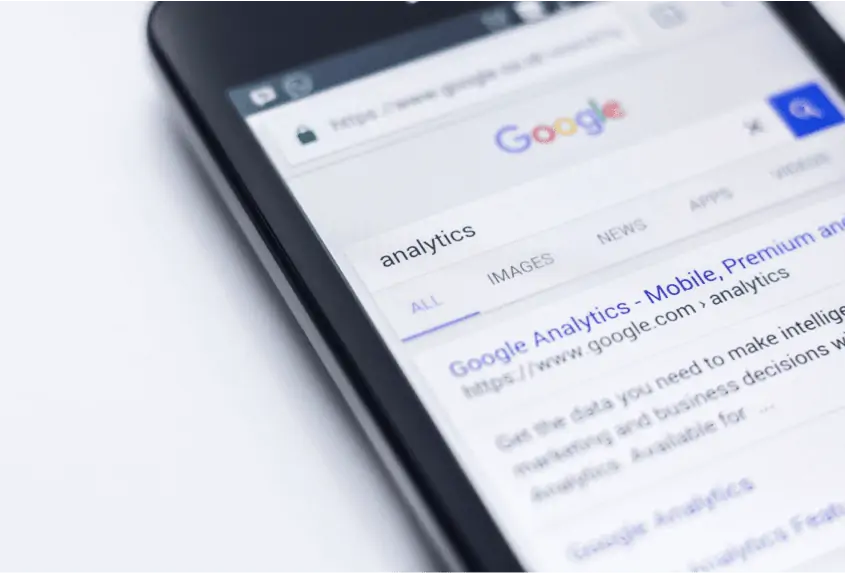
The beauty of selling on Amazon is that you don’t have to worry about driving external traffic to your products. Aside from Amazon Sponsored Ads and Facebook Ads, Amazon generates enough traffic to their marketplace. What makes Amazon unique is that the traffic is mostly buyers.
When it comes to your own website, getting traffic will be the major challenge. However, there are a number of ways to drive traffic(and sales) to your E-commerce store.
Pay Per Click Advertising
Like Amazon Sponsored Ads, pay per click marketing is very powerful in driving traffic towards your products. The most popular pay per click networks are Google Adwords and Bing, when it comes to these two however, you will have higher competition on keywords so your strategy has to focus on long tail, less popular keywords.
Blogger Outreach
This is a similar technique to the one I used in my French Press Case Study. When you’re a new brand, chances are that few people know about you. In this case you have 2 options:
- Build an audience yourself which requires time and money.
- Leverage someone’s existing audience to gain exposure.
Bloggers are perfect for gaining exposure! They are trusted by their audiences and gain consistent traffic to their blogs. When choosing bloggers to promote your brand or products, take into consideration the following:
- Are they well known and trusted in my category/niche?
- How much traffic does their blog get?(use Alexa to check this)
- Are they active on social media?
- Are they experienced in promoting products similar to my category/niche?
- What is their target audience demographics?
One advice is to find someone that truly fits your brand, audiences can tell if someone is truly passionate about your product(s), so be very careful in who you pick. Once you filter down the blogger(s) of your choice, you need to contact them. You can do this either via their website(normally they have a specific Advertisers page) or via social media. Based on experience, these two incentives work best:
- Money offer with no commission involved(This can normally range from $50 to $1000 depending on the blogger).
- A free product sent to them and they get commission for each referral. They can use the Amazon Associates program or you can create your affiliate program on your website.
The second option normally works best as the blogger will be more incentivised to promote your brand. Bloggers are a great way to drive high amounts of traffic both to your Amazon listing and your website. If a blogger proves very successful, a good option would be for your brand to sponsor the blog as you get a permanent advertising presence.
SOCIAL MEDIA MARKETING
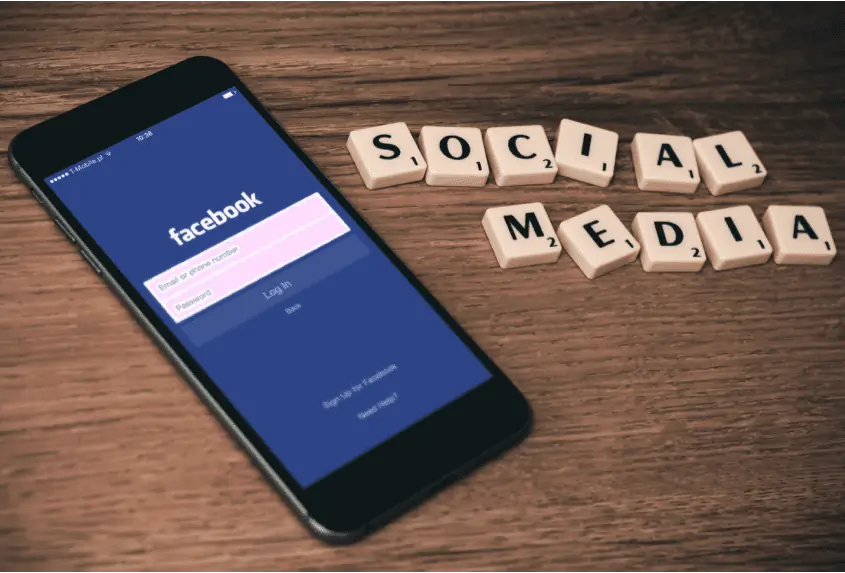
Social Media Marketing is the number one tool to drive traffic to your website and get exposure for your brand. Although building a following takes some time, you can drive huge amount of sales and traffic with targeted discounts or giveaways. The most popular social networks for E-commerce are:
- Facebook – Great for all types of businesses and they have the best converting ads out of all social media networks.
- Twitter – Although not very ideal for promotions and showing your products, it’s excellent for giving news, updates and connecting with influential people in your category.
- Instagram – The most popular social network for E-commerce entrepreneurs, it’s design and features make it ideal to show your products. The only downside is that only the bio is clickable so you don’t have many options for driving traffic. However, it’s by far the number 1 tool for getting exposure.
- Pinterest – Another great social media platform ideal to show your products and branding through images. It is the only social network that has a majority female following, so if your target audience is in this group, it is recommended to focus your efforts here.
- Snapchat – This social media platfoorm is not ideal for every businesses, however, its popularity is growing and if you’re targeting millenials – you need to be on Snapchat.
- YouTube – Out of all the social networks, YouTube has the most power to drive huge amounts of traffic and make your brand go viral. The only downside is that producing videos requires capital investment and a lo of time. A way to go around this is to send your products to YouTubers who target your niche, by doing this you leverage the audience of the YouTuber
Building your own e-commerce store requires a lot of work and patience. However, the benefit of having your own platform and customers is very rewarding. While the Amazon platform will most likely always be the main source of revenue, having an additional sales channel that you fully control is the ultimate step towards having a strong brand.
Brand Building – Social Media & eCommerce
Social Media marketing – a beginners guide. In this part I want to explain the key steps you should take to create your own sales channel. Another way to create a powerful sales channel is through Social Media.
Social Media is essential to get your target audience to find your brand and connect with influential figures in your niche. In the past few years, social media has become the number one medium for promotion and businesses who want to achieve long term success need to have a social media strategy in place.
Why Having a Social Media Presence is Important
We often hear how social media is powerful and important for brands around the world. The main reasons why social media is the platform of choice is:
- Advertising conversions are higher than other forms of promotions such as traditional PPC, offline marketing and television.
- People spend a lot of time on social media so it’s very easy to find your target audience.
- Social Media provides a lot of data on demographics and behaviours which if used right it can scale up your business significantly.
- Drive Huge Amounts of Traffic To Your Website & Amazon Listing.
- Connect with your customers on a personal level and find out their concerns or needs in your category.
A LOOK AT SOCIAL MEDIA PLATFORMS
Facebook is without a doubt the most popular social network to use. Although having(and growing) your own Facebook page is essential for your brand, the advantage Facebook has over other platforms is an affordable and converting advertising platform.
Initially, the best strategy to use Facebook Advertising is to find your target audience. No other advertising platform in the world allows you to segment your audience by:
- Gender
- Income
- Country
- State/Province
- Interests
- Age
When launching a new brand, my strategy is to have a budget of $5 a day maximum to find my target audience, that way, when the time comes to launch my product, I know already who to target. Facebook also allows you to target audiences who liked a particular page, so if you have a fitness brand and want to target female audiences aged 18-25 who like Nike, Adidas & Under Armour; you can do that with FB Ads.
What this allows is to have better converting Ads and more clicks to your sponsored posts. One suggestion I can give is to not direct the audience to your Amazon listing(unless you have a lot of positive reviews), but instead to your website/landing page to collect email addresses.
We will talk in more detail about Facebook Advertising in the coming weeks, however, as a business in 2017 and beyond, you need to be on Facebook – it’s where your target market hangs out most of the time so take advantage of it!
Instagram is the platform of choice if you want to showcase your products, brand and your story. The visual aspect of Instagram allows you to truly differentiate yourself from your competitors. Since Instagram is owned by Facebook, you can use their advertising platform to also target Instagram users.
What I really like about Instagram though, is the ability to connect with authority in your niche and even larger brands. This makes it the perfect social media platform alongside YouTube to gain massive exposure for your brand.
However, the downside of Instagram is that you only have one clickable link in your whole profile – The Bio. This makes it very hard to direct audiences to click the link, for this reason, although Instagram can be used to drive sales, the main use of the platform is to gain exposure.
Twitter is one of the top social media networks, however, their follower base has been declining in recent years so in my opinion, other social media platforms are much better. Twitter works best for announcements or to give news regarding your brand or products.
I would still suggest you to have a Twitter account though, not only it works great for some niches such as fitness, yoga and cosmetics; but also because as a brand you need to be everywhere! The more places you are, being social media platforms, marketplaces or countries, the better.
So while in some cases twitter can work great, it’s not an ideal platform for Ecommerce sellers.
Snapchat
Out of all the most popular social media platforms, snapchat is the newest one. However, they are quickly gaining a large following(particularly amongst younger audiences) and they are set to go public soon. Snapchat is a video-based application that allows you for to share videos which are only available for a limited amount of time.
This is a great app if you want to make quick promotional videos or even use it to make instruction-based videos on your products. However, unlike most social media platforms, Snapchat only applies to certain categories.
Nonetheless, if your market is mostly younger audiences, you need to use the app as it’s quickly becoming the number 1 social media platform amongst the younger generation.
YouTube
YouTube is by far the best social media platform for exposure and driving insane amounts of traffic to your website or Amazon listing. With the introduction of their Video Advertising Platform, you can quickly gain enough exposure or even go viral. It’s not uncommon for unknown brands to go viral and get massive sales via YouTube. Video based ads convert much better also, however, at $0.20 a click, it can become quite expensive.
The power of YouTube relies in a pool of YouTubers from all kinds of niches, in fact, if you can find influencers or brand ambassadors willing to make an unboxing review or How-To-Guides for your product, you will get more sales than any other method, such as PPC or FB Ads.
The major tips I can give regarding YouTube are:
- If you’re starting your own channel, your videos must be very well made.
- Focus on providing value and showcasing your brand.
- If sponsoring other videos, make sure that your products are of a higher quality. Packaging, inserts and the product itself need to look professional.
- With thousands of videos uploaded every minute on YouTube, your videos can easily get lost, have a keyword strategy in place and leverage other social media networks to get views.
If used right, YouTube can be the single platform that elevates your brand from a small business to a well-known brand loved by its audiences. Unless you have enough video making or editing experience, I wouldn’t suggest you make YouTube videos yourself(as a brand), instead, outsource the whole process or even better, leverage the audience of other YouTubers.
Pinterest is a social media platform that very different from the rest. It focuses mainly on images where they are structured using pins and boards. What makes Pinterest unique is that the platform has a majority of women followers, so if your brand or products are aimed at this demographic, you need to focus your marketing efforts on Pinterest.
Pinterest, unlike Instagram, has clickable images, so every image you put in the platform can be directed to your website or Amazon listing. This becomes really powerful when your follower base get bigger as it can help increase conversions
Social Media & E-Commerce
Social media and E-Commerce are a perfect match for each other! No other platform gives you the ability to showcase your products in front of thousands of potential buyers. When it comes to promoting your products on social media, you need to focus on these points:
- Show what your brand is about(your brand story). People are more willing to buy from brands they can connect with.
- Run Giveaways, Polls and Promotions frequently. These will not only boost sales but it will also give you some great data about your customer base and buying habits.
- Show unique features about your products and great looking pictures will attract more followers.
- Use social media to provide great customer service. Check your inboxes frequently and reply to comments you get on your posts.
- However, the most powerful way to gain followers and exposure to your brand via social media is by advertising. Facebook and YouTube provide the best converting advertising platforms and give you a lot of data about your customer behaviour.
Amazon PPC can get very expensive after a while and social media is another great way to drive traffic. It is recommended to not drive traffic directly to your Amazon listing via social media advertising, but instead, use the following strategy:
- Set-Up your Facebook/Instagram/Youtube Ads targeting your ideal audience.
- Links should point to your website or Ecommerce store.
- Have a landing page and an offer to get email subscribers.
- Provide customers the option to either buy from your website or Amazon itself.
By driving traffic to your website you have the ability to collect email subscribers. Email subscribers allow you to:
- Pitch offers during holiday seasons or when you experience slow sales.
- Connect with your customers to build a relationship with your brand.
- Send an email blast when launching new products so you not only get some sales, but also some traffic to your listings.
Social Media Marketing can be a great asset to have for your business. No other tool comes close when it comes to connecting with your target audiences and getting exposure for your brand. Keep in mind that social media is a slow process and not every platform will suit your brand.
I recommend focusing your efforts on 2 or 3 social media platforms and outsource the rest to a virtual assistant.
BRAND BUILDING – INVENTORY STORAGE
This part will be on a completely different, but equally important subject – Inventory Storage & Fulfilment. When it comes to product-based businesses such as ours, it’s important to not only get your logistics right, but also have the best rates and fast shipping.
I have used both FBM(Fulfilled by Merchant) and also FBA so I will also give my point of view on what works and what doesn’t. Although my main focus is on FBA, I normally still leave some units in a storage facility either to reduce my Amazon fees or to fulfil any orders from my own Ecommerce store.
The part of this post will be all about how you can manage your inventory effectively and save fees when compared to Amazon. I will also show you how you can use a third-party fulfillment center to take advantage of busy periods such as the Chinese New Year or the December holiday seasons.
So let’s have a look at what options are there for importers or sellers and explore different ways on how you can manage your inventory effectively.
What To Look For In a Fulfillment Center?
If using a third-party fulfillment centre, ideally it should be as similar to Amazon FBA as possible in terms of service and efficiency. However, here are some features I look for when making my decision:
- The fulfillment centre should be in a strategic location so I reduce shipping costs from the country of origin.
- The FC should have a backend software system that enables me to track my inventory and gather other important data(fees, shipping rates, SKUs comparison, etc.).
- They should have integrations with all major Ecommerce marketplaces(Ebay, Amazon, Shopify, BigCommerce, etc.). This allows me to manage all my marketplaces(in terms of logistics) from one place.
- Their shipping rates should be as low as possible and they use all major courier services. Never use a fulfillment center that relies on one courier as it limits your options.
- If I’m using the fulfillment center exclusively for Amazon, I look for ones that have extensive experience dealing with FBM. The requirements are more strict when it comes to FBM and a few late shipments can compromise your Amazon seller account.
The Benefits of Fulfillment Centers
Fulfillment centers offer a lot of advantages for ecommerce sellers who want to expand towards other sales channels. Some of the benefits are:
- Cheaper long term storage than Amazon.
- Backend dashboard allows you to track inventory and shipping status of your products.
- Some FCs offer great rates for oversize items and storage.
- Ultimate control over pricing and customer experience(if selling from your own store).
- Brand-able shipping packages.
- No restrictions on inserts or marketing materials.
- Multiple integrations with eCommerce marketplaces.
- Ability to process returns easily.
- FC’s can make custom orders for special clients.
As you can see, choosing the right fulfillment center has a lot of benefits and if you’re planning on launching your own store, a FC outside of FBA is recommended.
I personally only use SHIPBOB as my choice of Fulfilment partner. I’ve done an in-depth post on them here.
BRAND BUILDING – BRANDING YOUR PRODUCT
I’ve done two in-depth posts on creating a great packaging here and on differences in private label packagings here.
BRAND BUILDING – RETAIL & WHOLESALE
My background is actually retail, so I naturally started out with retail before moving onto Amazon. When a friend told me about FBA I didn’t even know that Amazon let’s third parties sell on Amazon.
I thought they only sell their own product. I am glad that friend pointed me to FBA, otherwise it would have been a lot more difficult to get my brand off the ground.
It has been nearly 3 years since I started my own business and as I said I started in retail. I had collected many contacts in retail and that was the natural way to go for me.
Looking back I am happy I started out in retail as it helped my brand immensely to get exposure while creating a second income trough Amazon.
The ultimate goal of any brand or company is to get their products in front of as many customers as possible. The only way to do this is by listing your products through all the sales channels that are available to brands.
The most powerful or “rewarding” sales channel is retail and wholesaling. Retail has the power to move your product quickly, thus getting huge exposure for your brand and products.
The Challenge
Retail is notoriously one of the hardest sales channels to get into. Your products must not only be appealing to consumers, but also packaging and marketing materials have to be of a higher standard than E-commerce.
However, one of the hardest challenges is finding retailers who are willing to take on a new brand and its products. Retailers often don’t take huge risks with their capital and prefer to invest in brands that are already established or brands that carry really unique products. So the key is to have unique products rather than generic.
Selling a Garlic Press that has some accessory doesn’t make you unique. The retailer will buy this product from his trusted source.
Larger items also have the issue of shelf space; which in retail is limited. On top of that you can’t just knock on a retailers door and expect a smooth and fast process.
Retailers have decision maker hierarchies and it is often difficult to get to the right decision maker. Often times retailers already have their suppliers or connections and they aren’t open to a new supplier. Reasons being that they already may have great buying conditions and relationships with their existing suppliers.
In some cases I worked on a potential retailer for over 2 years before getting an order (in my previous job) and in those 2 years there were 3 changes on decision makers and I had to start from the beginning again.
The new guy might not be open to you as the previous guy was and maybe he is already bringing sources/suppliers to the job and you need to start all over again convincing the new guy.
On top of that most larger retailers get emails and phone calls every day from new suppliers wanting to sell them their product. So it is a long and windy road to get into retail, sometimes as much as 2 – 3 years. But once you have your foot inside the door you are in a great position.
Solution and how to get into retail
One word – relationships. If you have a good relationship the price or your product doesn’t really matter.
Someone is likely to buy from you if you have a relationship with him right? The more credentials you have and the more history you have with a person the more likely that person is to buy from you right?
An example. Let’s say you need a new health insurance. You already have an insurance from your trusted childhood friend (let’s call him Steve). Steve is quite expensive and maybe his insurance package doesn’t even have a lot of benefits.
But you still buy from him because he’s your friend and you’ve known him for years & on top of that you trust him. You even have him over at your house for BBQ’s, you meet up for beers etc.
You get a phone call from an insurance company trying to sell you a new health insurance with much better benefits. You don’t know this company but the offer sounds appealing.
You take the offer and go to Steve and tell him he needs to make the same offer or you buy from this new insurance company. Steve probably can’t make the same offer but he’ll adjust his old package and give you more benefits, maybe even at a better price. On top of that he throws in a coupon or voucher for shopping at Amazon.
You close the deal with Steve. That’s the power of relationships. And that’s how retailers work – they have their trusted sources and relationships. “You need to become Steve”.
Many of those relationships especially in the “old days” included some sort of bribery. For example if you switch to a new supplier that supplier would buy out your entire old stock from the old supplier. Back in the 90’s it wasn’t unheard of that a new supplier would invite you over on his yacht and take a trip down to the South of France.
Thankfully these “unfair” tactics aren’t accepted anymore – at least not with multinational retailers. There are strict enforcements in terms of bribery in big retailers. However, the relationship factor still plays a key role in doing business.
Today its just called “wining and dining” a customer. You take the customer out for a steak dinner and a nice bottle of wine and you probably don’t even end up talking business but a few days later you’ll get an order.
Now the key is to build a relationship with the buyer. You probably won’t be able to close a deal for months or even years because every offer you send to a new prospect ends up in the “trash” inbox.
1) Start out by visiting local stores that have maybe 20-30 stores in the area/country or state. Try to get an appointment with the Manager or Purchasing Department. Once you have an appointment prepare yourself with:
- Company presentation (Powerpoint / PDF)
- Product Catalogue (Can be PDF but prepare something nicely and don’t just show a link to your Amazon listing)
- Bring samples and business cards
- Bring your wholesale price list
A store can probably take up 5 pieces per item/per store. So 30 stores makes 150 pieces, not bad for a first order.
2) Once you are listed in a smaller or local store look into larger retailers that have 100-200 stores.
Same principle applies in terms of preparation but you are probably not the only one knocking on their doors. So you need a bit of track record with a smaller retailer or your online portfolio.
Retailers with more than 100 or 200 stores probably have their own purchasing department, maybe even a buying office in Asia. So you need to get to the decision maker.
There are several ways to get to decision makers but the most effective yet also most frowned upon are cold calls.
Email the decision makers or better cold call first. There are cold call guidelines for free on the internet. Key is to let the buyer speak and you only listen.
Most buyers just want to talk about how great they are, let them. You need to make them feel that they have the upper hand.
After your first cold call, follow up on the topics and email a proposal as discussed in the call.
Give it a few days and then either email or call again.
3) Exhibiting your products at a local or international exhibition is the best way to find retailers and wholesalers.
This time the buyers come to you and all you really have to do is follow up with the topics of the discussion.
The key takeaway here is that getting into retail really is a marathon not a sprint but it can be very rewarding:
The Rewards
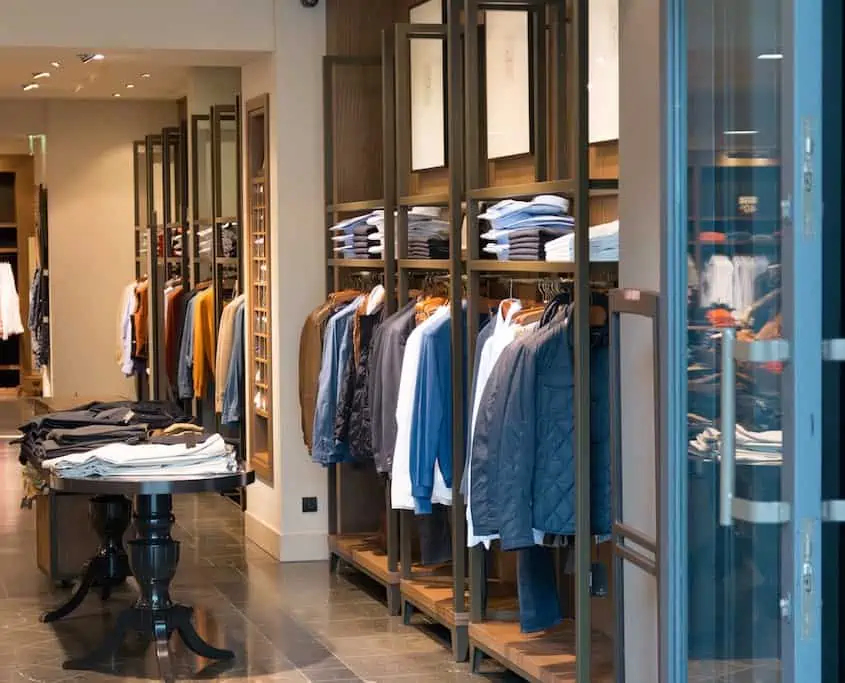
The best thing about retail are re-orders. You might not make much money on the first order but if the item sells well re-orders will come and often times in much larger quantities than the 1st order. The good thing then is that the entire process is already set up and all you have to do is to place an order with your factory, knowing the entire process with the retailer. Or if you have stock back home you can just send in the new order to the retailer from your warehouse.
From some retailers I get re-orders every 1-2 months for the same product and all I have to do is place an order to the factory and ship the item to the customer.
These orders can be 2-5,000 pieces each time. Sometimes I make 1$ on a product, sometimes 5$. So in 1 day I can make 25,000$ in profits not really doing anything (a bit exaggerated – there’s still work to do
Imagine how many months you’ll have to sell on Amazon for an order and profit that large.
Getting into retail is very hard but as I said it can be very rewarding. It’s not a sprint so some deals can take 2 or more years but if the client is worth it don’t give up. Obviously the above is just a short visit into the topic, there’s much more to it such as contracts, advertisement material, sampling, pricing structures etc.
BRAND BUILDING – MOVING FORWARD FROM AMAZON
We are nearing the end of this blog post, bear with me. This part will be all about thinking forward and expanding your business into other areas.
Amazon is still the number one E-commerce marketplace in the world, and it will be for a long time. Although we believe that Amazon has some disadvantages for sellers who wish to have complete control over their business, you should always list your product there. Currently, the markets which we recommend expanding to, are:
- Amazon EU(UK & Germany should be a priority).
- Amazon Japan
- Amazon Australia
- Amazon China
These marketplaces have a much lower volume than their US counterpart, however, the traffic and sales are increasing year-on-year and Amazon has been investing heavily to attract buyers & sellers to their marketplaces outside the US.
EXPAND INTO OTHER E-COMMERCE MARKETPLACES
There are a number of ECommerce marketplaces that allow you to list your products, some also have a similar fulfillment service like Amazon FBA. While not all ECommerce marketplaces are ideal(some have very low sales volume), this will allow you to increase your brand visibility and target markets which your competition is unlikely to target.
In my opinion, the marketplaces that make the most sense to register a seller account are:
- Walmart
- Newegg
- Ebay
- Rakuten
FOCUS ON GROWING YOUR ONLINE STORE
Having your own ECommerce store is only to have complete control over your brand & pricing. One of the things I like about having an ECommerce store is that I have complete freedom when it comes to:
- Creating special offers/giveaways.
- Store Design & Branding
- Customized Packaging
- Control over Customer Service & Experience
However, the best thing about having your own store is that it’s a challenge! While Amazon definitely needs some mastering – all the buyer traffic is already there! With your own store, you need to spend an enormous amount of time dedicated to bringing traffic to your website.
While this requires a lot of hard work and testing, in my opinion, it’s more rewarding and it can be scaled significantly once you have a working formula
Outsourcing
I feel this step is the most important part of any business. A successful business is a scaleable business. While you should always retain control over the key tasks of your business, it is important to delegate tasks, especially those tasks that are time-consuming or you have no expertise in.
With the rise of freelancing and outsourcing websites, it is very easy to find very skilled freelancers or companies for your business. In my opinion, these are the tasks that you should definitely outsource:
Importing
- Product & Packaging Design
- Product Inspection
- Logistics(Freight Forwarder, Warehousing etc)
- Product Sourcing
Business
- Legal & Accounting
- Social Media Marketing
- Company Branding
- Graphic Design
Of course, what tasks you outsource depends entirely on you, however, if you want to scale your business and achieve freedom, you need to delegate tasks.
CONCLUSION
This concludes the blog series, I hope that this series proved helpful in your efforts to build a truly successful and global brand.
Building a brand takes a lot of effort, however with the right strategy in place, you will have a company that has great products and it’s loved by its customers.

